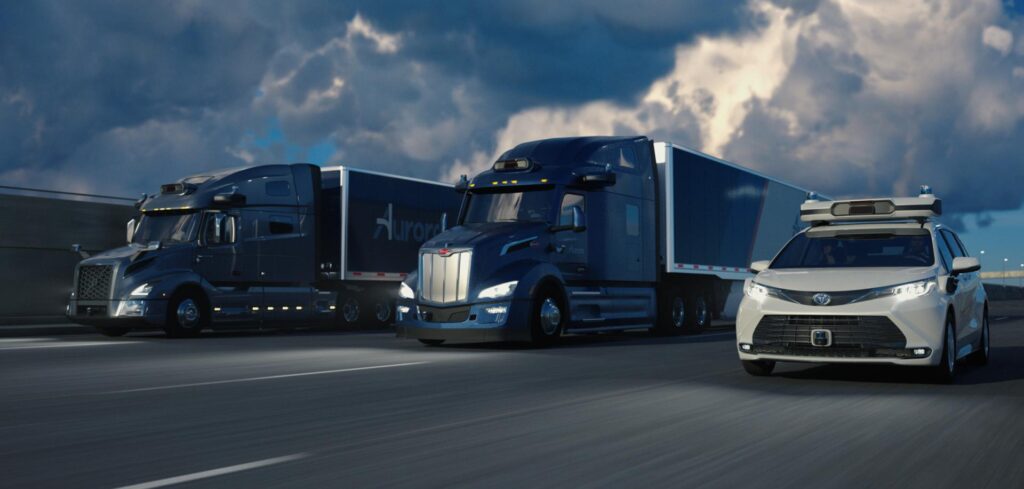Aurora Innovation has launched its Driver Beta 2.0, the second release of its integrated hardware and autonomy system, which will be incorporated into the company’s next-generation truck fleet and its recently unveiled Toyota Sienna ride-hailing test fleet.
Key upgrades to the system include better navigation capabilities in complex environments such as construction zones, which require maneuvers such as changing lanes and nudging around concrete barriers and/or cones. Aurora states it also has the ability to identify and react naturally to temporary speed limit and lane closure signs, construction workers and vehicles, trucks hauling oversized equipment, and other unique vehicles and actors commonly present in long-haul trucking situations.
Beta 2.0 also features upgraded cameras with four times the resolution as those found on Aurora’s first system. This, says the company, allows it to see the same level of detail at double the distance. Combined with its FirstLight lidar and imaging radar, these high-resolution, long-range cameras should allow the Aurora Driver to perceive and react to distant objects like road debris, vehicles on the shoulder, construction zones other hazards.
The Aurora Driver 2 will be employed to launch both Aurora Horizon, the company’s trucking product, and Aurora Connect, its ride-hailing service, leveraging its Common Core of Technology, which enables the intelligence and learnings from its trucks to easily adapt to its minivans.
“Aurora Driver Beta 2.0 represents an incremental yet critical milestone in our path to launching an end-to-end autonomous product that can safely move both freight and people,” said Chris Urmson, Aurora CEO and co-founder. “Whether we’re hauling goods for FedEx or preparing to take passengers to the airport, we’re seeing our technology evolve into a valuable product, and that’s exciting.”


